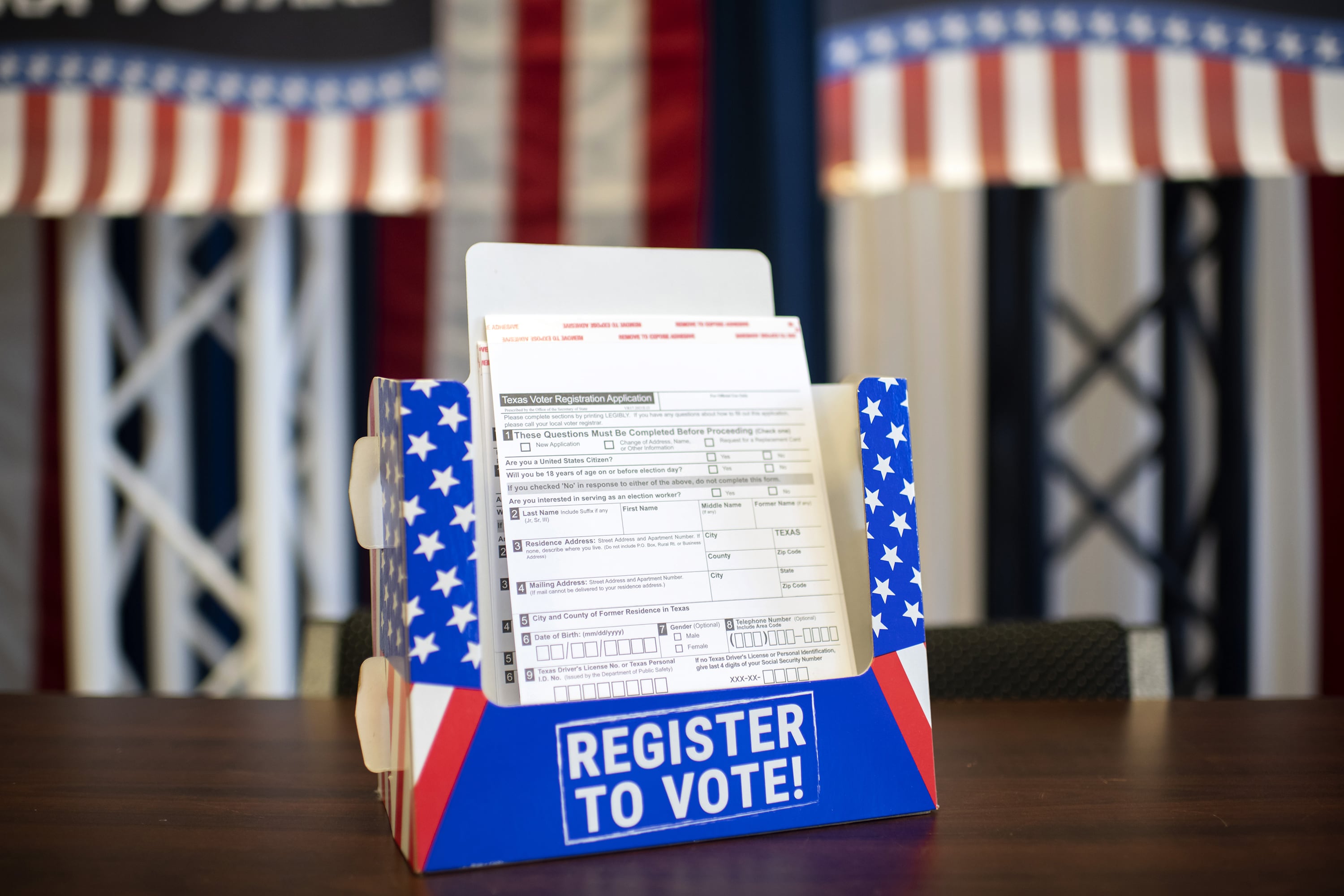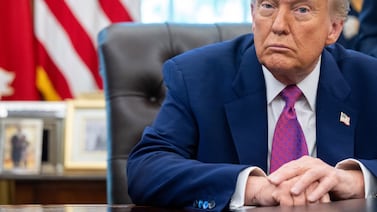Votebeat is a nonprofit news organization reporting on voting access and election administration across the U.S. Sign up for Votebeat Texas’ free newsletter here.
Texas officials are urging more counties to join a revamped voter registration management system provided by the state, as an alternative to a private vendor that surprised some of its Texas customers earlier this year with a big surcharge.
The state’s top election official told Texas lawmakers Monday that the upgraded system coming next year could eliminate the need for any county to use an outside vendor.
“We did start hearing from counties that wanted to come into the state system, and we have currently been onboarding some additional counties that are leaving their third-party vendor and coming directly to the state,” Christina Adkins, the elections division director for the Texas Secretary of State’s office, said during a state House Elections Committee hearing Monday. She added that some counties have also changed outside vendors rather than join the state system.
Adkins said 33 counties across the state — including Harris, Dallas, Bexar, and Collin counties — currently use a state-approved vendor to manage their voter roll data. Having all 254 Texas counties manage their data directly on the state system would give the Texas Secretary of State’s Office more oversight over all of their voter list maintenance practices, which are meant to ensure the rolls are updated and accurate.
The more counties that rely on the state system, “the better we can perform required monitoring activities,” Adkins said.
Vendor’s surcharge notice created a scramble
Votebeat in April reported that California-based Votec Corp., one of three companies providing voter registration data services in the state, sent a letter to its Texas clients in March assessing a 35% surcharge — in some cases, tens of thousands of dollars — to help the company stay afloat.
The request left some county election officials scrambling to find the funds to avoid a messy switch to a different vendor, or to the state system, to manage their sensitive voter data in a presidential election year. Some were concerned about persistent problems with the 20-year-old state system.
In Dallas County, the election department received an invoice from Votec with a surcharge of $66,000. In Collin, the surcharge was more than $40,000, and in Hays County, it was close to $20,000.
After Votebeat’s reporting, Adkins said the Secretary of State’s Office this summer began offering counties the opportunity to upload their data to the state’s voter registration management system, which was first developed in 2004. The revamped version is supposed to launch sometime next year.
In addition, this summer, the agency began developing backups of voter registration data from all the counties that use a third-party vendor to manage their voter rolls.
“Should anything happen between now and November, with any vendor for any reason, we can at least provide a snapshot [of the data] as of this summer, so our counties are not in any kind of catastrophic situation,” Adkins said.
Lawmakers asked few questions at the hearing, but generally signaled support for giving the Texas Secretary of State’s Office more oversight and the ability to more closely monitor voter roll list maintenance.
State Rep. Mano DeAyala (R-Houston) told Adkins that he believed that having all counties using the state database would be the easiest way to ensure the state’s voter rolls are accurate. For counties that choose a third-party vendor, he said, it’s important that the vendor “knows how to communicate with us as well as possible, so that it can be as seamless as possible.”
Texas uses a combination of databases to manage voter rolls
The Help America Vote Act, a federal law enacted in the early 2000s, requires states to develop and implement “a single, uniform, official, centralized, interactive computerized statewide voter registration list.” Exactly how that’s done varies by state.
Some states have one central database that connects to terminals in local jurisdictions. Other states gather and compile information from each local jurisdiction’s voter registration database. Texas uses a combination of those methods.
Most Texas counties enter their voter registration data directly in a statewide database called the Texas Election Administration Management system, or TEAM, which the state developed to meet the HAVA requirements.
But the system had flaws. Nearly half of Texas’s 254 counties reported it was slow and did not allow them to “perform their jobs effectively,” according to a 2007 audit by the State Auditor’s Office.
The state has worked on improvements and updated the system since that report, but election officials frequently say it is slow to produce reports using election data, such as a list of voters in the county who have requested an absentee ballot.
TEAM’s flaws early on drove dozens of counties, including the largest ones, to maintain their own voter registration databases using private vendors, and to sync their data daily with TEAM, as required by law. But Adkins insists the state has improved the system.
“The vendors did a good thing for Texas because of the capacity issues that we used to have, but our system doesn’t have those limitations now,” Adkins said.
Counties prepare for a transition
The Secretary of State’s Office approves vendors after ensuring their systems can exchange files with TEAM.
The information they help counties manage includes voters’ addresses, voting history, registration applications, images of signatures for verification, images of mail-ballot envelopes, and other personal data.
A transition to the statewide database would come at no additional cost to counties. But one county election official said the county has spent an additional $30,000 to store large digital files, pending the launch of the revamped system.
“We haven’t used it in an election yet, but we’re doing a lot of testing and going through things. But we did have to acquire another vendor to hold our images,” Hays County elections administrator Jennifer Doinoff, whose office used Votec before recently transitioning to TEAM, told lawmakers Monday. “We’re having to do contingency planning for those images, as in getting them and backing them up locally.”
Any forced statewide transition to TEAM would require legislative action. Unless that happens, counties will still be able to choose to use TEAM, or to hire a vendor.
Adkins suggested to lawmakers Monday that barring such legislation, creating a contingency plan and required back up of the data would be necessary to “make sure that that data is secure and consistent across our counties and across the state system,” she said.
Natalia Contreras covers election administration and voting access for Votebeat in partnership with the Texas Tribune. Contact Natalia at ncontreras@votebeat.org





